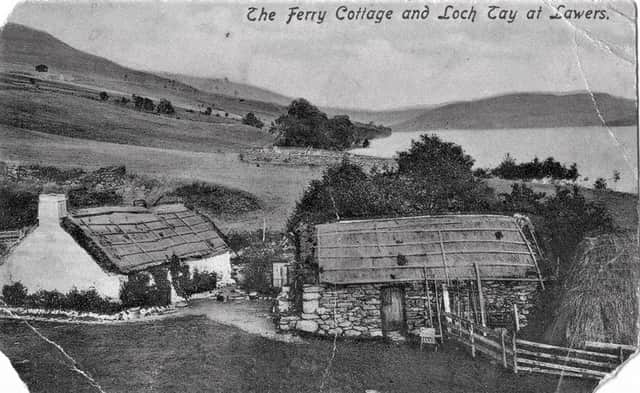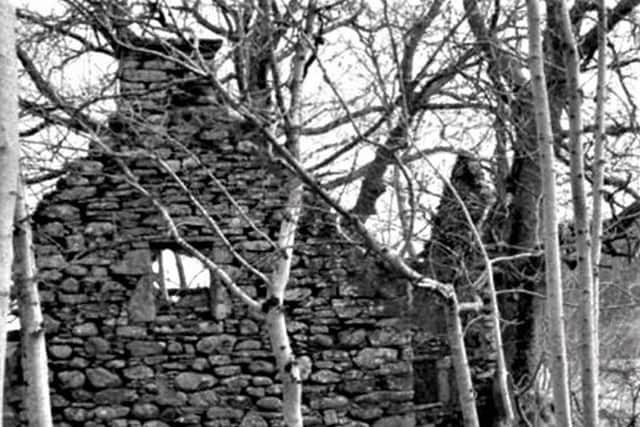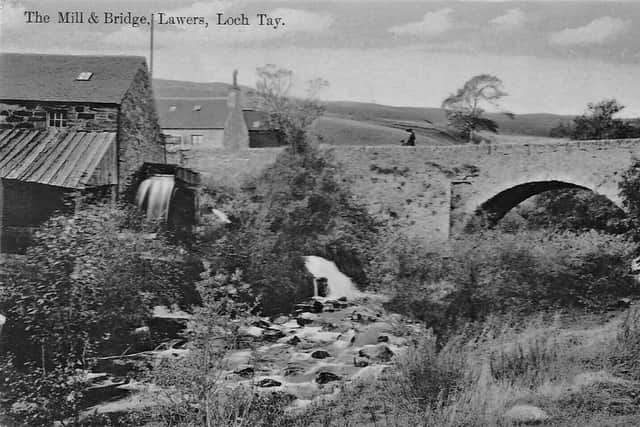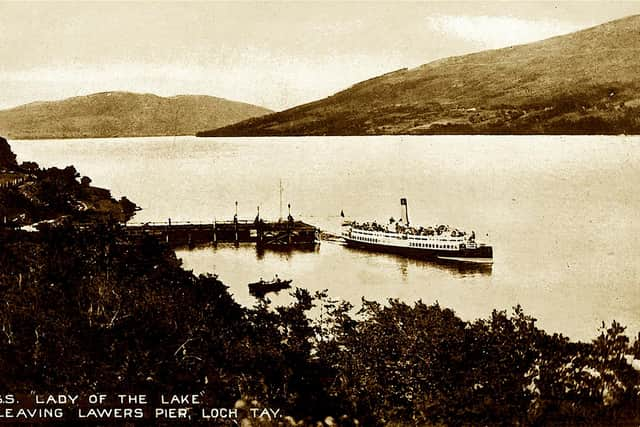The village that stood for 1,000 years - and slowly slipped away


The last person left Lawers in the 1926 with the remains of old homes, a church and a mill still found down by the edge of Loch Tay. Here, you’ll also see the last vestiges of the village pier which once brought parishioners and cattle from surrounding settlements and later tried to tempt a fresh future for the village by welcoming the new breed of Victorian traveller who jollied on steamships across the water.
By then, however, it was too late for Lawers with day trippers simply walking past the empty homes of those who had already left as they made their way to Ben Lawers or for refreshments at a nearby hotel.
Advertisement
Hide AdAdvertisement
Hide AdThere was nothing to see here - apart from the shadows of a way of life once lived.


The village’s demise has been researched by author Mark Bridgeman in his new book, the Lost Village of Lawers, which looks at the people who made this once-thriving community, as well as its famous resident, the Lady of Lawers, a 17th Century soothsayer who is credited with predicting many events, including the Highland Clearances, the arrival of steamships on the loch and the onset of rail travel - or ‘fire coaches’ – through the Drumochter Pass.
Today, she is said to haunt the village that continues to decay away.
Mr Bridgeman said Lawers was once a ‘flourishing and important community’ whose influence was felt beyond the people who called it home.
He said: “This small village offered work, shelter and education to the once larger Lochtayside population.”


Villagers eked out their existence on the poor upland soils of Lochtayside with the Minister of Fortingall noting how they survived on so very little.
“They bled their cows several times in the year, boiled the blood, eat a little bit of it like bread, and a most lasting meal it was,” the minister wrote in Kirk records.
Mr Bridgemen said the Earls of Breadalbane attempted to relieve the pressure on the over-farmed land by building roads and bridges to open up the countryside and improve communications.
Advertisement
Hide AdAdvertisement
Hide AdFlax processing was established with a villager setting up a mill and lime kiln in 1752.


The population grew steadily between 1755 and 1800 with small pox inoculation reducing the death rate and the popularity of a diet rich in potatoes improving survival rates
The removal of tenanted smallholdings by the Breadalbane Estates to make way for larger farmsteads led villagers to migrate for work with depopulation accelerating with the Clearances under the 2nd Marquis of Breadalbane from 1834.
Mr Bridgeman said: “No sooner were the tenants turned out of their homes than the thatch was set on fire to prevent them from returning. One villager, who had assisted James Wyllie, the factor, with the evictions, was himself evicted.”
By 1841, just 17 people were crammed in to just a few houses, with rents tripling over 50 years. Ferries stopped running, as there were no passengers to pick up, and the roof fell in on the church, although services were still held there. By 1891, the population was down to seven. The door was closed for the final time at the Pier Master’s House, the last inhabited property, in 1936.
Mr Bridgeman said: “Now the encroaching trees and undergrowth are gradually cloaking what remains of a community that had existed for almost 1,000 years. Together with the ravages of the Highland weather, there may soon be little left to remind us of a once unique way of life.”
-The Lost Village of Lawers by Mark Bridgeman is available now on Amazon and from the Watermill Bookshop in Aberfeldy.
A message from the Editor:Thank you for reading this story on our website. While I have your attention, I also have an important request to make of you.With the coronavirus lockdown having a major impact on many of our advertisers - and consequently the revenue we receive - we are more reliant than ever on you taking out a digital subscription.Subscribe to scotsman.com and enjoy unlimited access to Scottish news and information online and on our app. With a digital subscription, you can read more than 5 articles, see fewer ads, enjoy faster load times, and get access to exclusive newsletters and content. Visit https://www.scotsman.com/subscriptions now to sign up.
Advertisement
Hide AdAdvertisement
Hide AdOur journalism costs money and we rely on advertising, print and digital revenues to help to support them. By supporting us, we are able to support you in providing trusted, fact-checked content for this website.
Joy Yates
Editorial Director